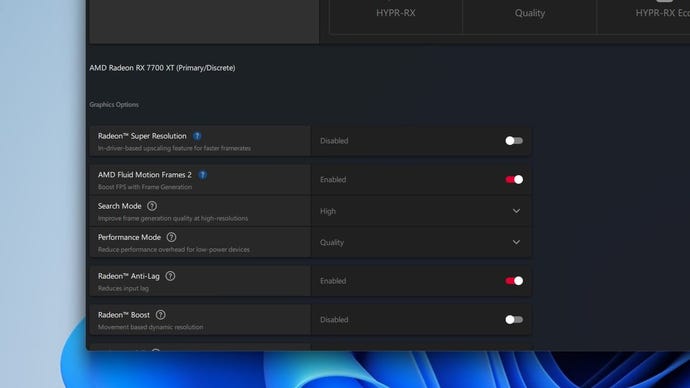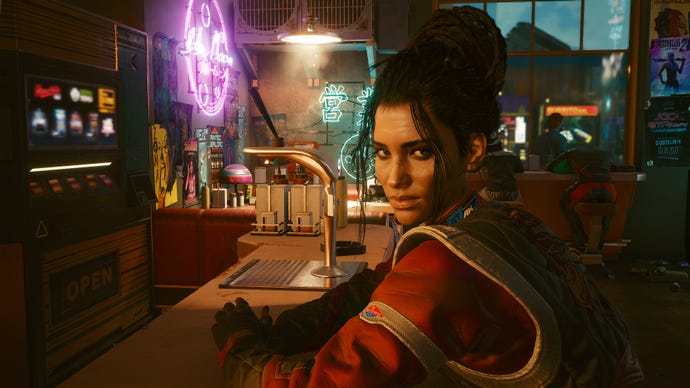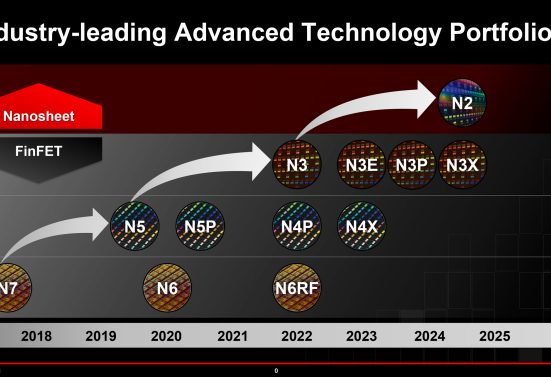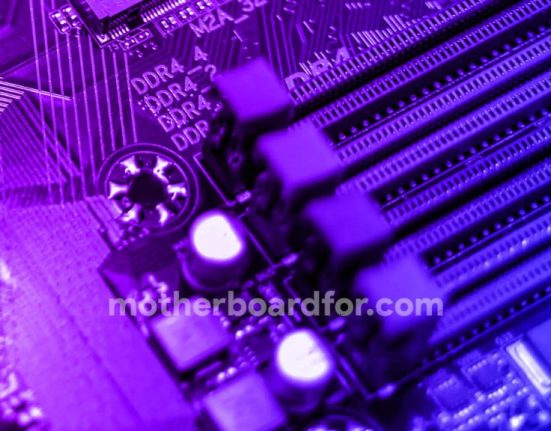There is a new version of AMD Fluid Motion Frames (AFMF) available for testing, and good news for Radeon GPU owners: it's drastically, almost comically better than the original version. While AMD's first version of driver-level framerate throttling (the same kind of framerate hack that messes with framerate) FSR 3 and DLSS 3 While Fluid Motion Frames 2 is plagued with judder, stuttering, and visual artifacts, it works as smoothly as you'd want it to, without compromising the ability to implement it in any DirectX 11 or 12-based game.
AFMF 2 is the highlight of a new AMD Software Preview Driver: Adrenalin EditionIt’s a new version of the Radeon RX 7000 and 6000 graphics card that you can install right now on Radeon RX 7000 and 6000 graphics cards, and it promises all sorts of improvements over that buggy first version. Reduced latency! Even higher FPS! More consistent frame times! All welcome changes for lovers of demanding fast-paced games, and that’s not to mention the added customization options. Here, you can set new “Search” settings to match your monitor resolution (High is recommended for 1440p and above, Standard supposedly works best for 1080p), or switch to a less system-intensive Performance mode that’s better suited to integrated graphics.

For those of us walking the big fat graphics card route, I will say that these configurations are very close; in a RX 7700 XTRunning games at 1440p, all four possible permutations of seek and performance modes looked and performed virtually identically. Instead, it’s the frame generation itself that marks AFMF 2 out as a true breakthrough, turning what was a dud into a serious alternative to DLSS 3.
Take latency for example. This is a standard trade-off for frame generation, and even DLSS 3 is not exempt, but the original Fluid Motion Frames was noticeably slower. AFMF 2 appears to reduce this latency across the board: the 17-20ms of extra delay in Horizon Zero Dawn Now it's only 10-11 ms, exactly the same as Like a dragon: infinite wealthwhich previously reached 47 ms. Cyberpunk 2077 It also improves significantly, with latency dropping from 51ms in AFMF 1 to a brisk 12-14ms with the new version.
As with any frame rate technology, the danger with talking about “feel” is that numbers can lie, as an improved 60fps will still only have the responsiveness of 30fps when half the frames are generated outside of the usual rendering process. And yet, these latency reductions make AFMF 2 an option. feel Better than before. The controls are a bit crisper, making the whole project more appealing for shooters, racers, or complicated platformers.
Then there’s… how it looks. Honestly, whether AMD has made any improvements to the accuracy of individual frames is hard to say. But this has never been an issue for frame-generating systems (outside of games that just do it wrong, like Immortals of Aveum at launch), as unrendered frames zip by so quickly that it’s effectively impossible to detect errors. AFMF 2 does a much better job of seamlessly switching real and fake frames together, though. When I first tried out Fluid Motion Frames in Infinite Wealth, it looked terrible, with constant microstutters indicating that the two types of frames were being displayed inconsistently. Now, that judder is completely gone, leaving a smooth, fluid type of motion that much more closely resembles the frame rate gains you’d get with a larger upscaler.

AFMF 2 does not correct or improve each One small nitpick about the original. Despite AMD’s claims of faster performance, the overall frame rate is comparable to AFMF 1, and it still uses the overly cautious trick of reducing or disabling frame generation if it detects very sudden changes in the on-screen image. This is to avoid generation errors caused by a lack of available reference frames, but as with version 1.0, you’re more likely to notice the sudden drop in frame rate when rotating the camera than to spot a suspicious frame that was only visible for 1/90th of a second.
As a result, you’re better off sticking with a proper GPU-based frame generator, like FSR 3.1 or, if you’ve got the right RTX 40 series card, DLSS 3. The problem with these, of course, is that they only work in specific games, unlike the more standalone Fluid Motion Frames. And even if version 2.0 isn’t perfect, it’s enough of a refinement that, unlike the first version, it’s actually worth using.













Leave feedback about this